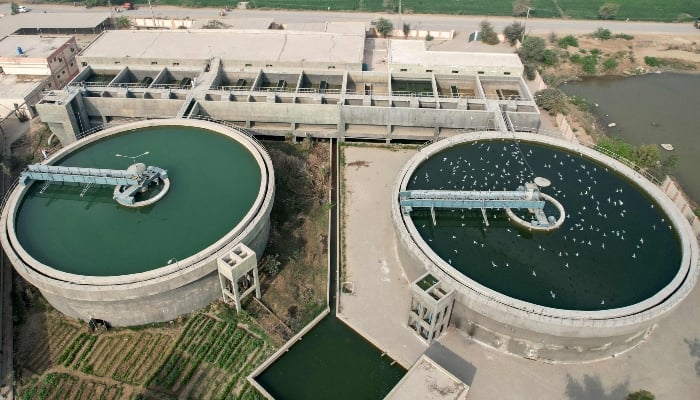WASHINGTON: Newly released data from the US Department of Homeland Security reveals that President Donald Trump deported 37,660 individuals in his first month in office, a figure significantly lower than the monthly average of 57,000 removals and returns recorded during the final full year of Joe Biden’s administration.
A senior Trump administration official and experts said deportations were poised to rise in coming months as Trump opens up new avenues to ramp up arrests and removals.
DHS spokesperson Tricia McLaughlin said Biden-era deportation numbers appeared “artificially high” because of higher levels of illegal immigration.
Trump campaigned for the White House promising to deport millions of illegal immigrants in the largest deportation operation in US history. Yet initial figures suggest Trump could struggle to match higher deportation rates during the last full year of the Biden administration when large numbers of migrants were caught crossing illegally, making them easier to deport.
The acting director of US Immigration and Customs Enforcement, Caleb Vitello, was reassigned on Friday due to a failure to meet expectations, a Trump official and two other people familiar with the matter said.
The deportation effort could take off in several months, aided by agreements from Guatemala, El Salvador, Panama, and Costa Rica to take deportees from other nations, the sources said.
The US military has assisted in more than a dozen military deportation flights to Guatemala, Honduras, Panama, Ecuador, Peru, and India. The Trump administration has also flown Venezuelan migrants to the US naval base in Guantanamo Bay. Trump said in late January that his administration would prepare to detain up to 30,000 migrants there despite pushback from civil liberties groups.
The military-assisted deportations could grow considering the Pentagon’s vast budget and ability to surge resources, according to Adam Isacson, a security expert with the Washington Office on Latin America think tank.
Expanding deportations
Meanwhile, the administration is moving to make it easier to arrest deportable migrants without criminal records and to detain more people with final deportation orders.
Last month, the Justice Department issued a memo allowing ICE officers to arrest migrants at US immigration courts, rolling back a Biden-era policy that limited such arrests.
On Wednesday, the US State Department designated Venezuela’s Tren de Aragua and seven other criminal gangs and cartels as terrorist organisations. Under US immigration law, alleged gang members designated as terrorists and people with ties to the groups could become deportable.
The Trump administration is also pulling agents from ICE’s investigative arm, the Justice Department, the IRS, and State Department to assist with arrests and investigations.
Jessica Vaughan, a policy director at the Centre for Immigration Studies, which favours lower levels of immigration, said those investigative agents could help crack down on employers who hire workers without legal status and people who have final deportation orders.
“Those are all harder cases,” Vaughan said. “In the case of a worksite operation, you’ve got a lot of planning to do, some investigation that precedes it, all of which takes a lot of time.”
During Trump’s first three weeks in office, ICE arrested about 14,000 people, border czar Tom Homan said last week. That amounts to 667 per day – twice last year’s average but on pace for a quarter million arrests annually – not millions.
ICE arrests spiked to around 800-1,200 per day during Trump’s first week in office, then fell off as detention centres filled up and officers surged to target cities returned home.
“It’s going to be like turning a supertanker for the first few months,” Isacson said. “The civilian part of the US government can only do so much.”
During Trump’s first month in office, ICE doubled arrests of people with criminal charges or convictions compared with the same period a year ago, according to data provided by DHS.
While arrests have risen, ICE detention space remains a limiting factor. The agency currently holds around 41,100 detainees, with funding to hold 41,500.
About 19,000 of those detainees were arrested by ICE while about 22,000 were picked up by US border authorities, according to agency data published in mid-February.
Of the 19,000 arrested by ICE, around 2,800 had no criminal record, according to the same agency data. The figure was up from 858 in mid-January, before Trump took office.
The Republican-led US Senate on Friday passed a bill to provide $340 billion over four years for border security, deportations, energy deregulation, and additional military spending. But the party remains divided on how to move forward with the funding plan, with Trump pressing for the funding to be combined with tax cuts.



